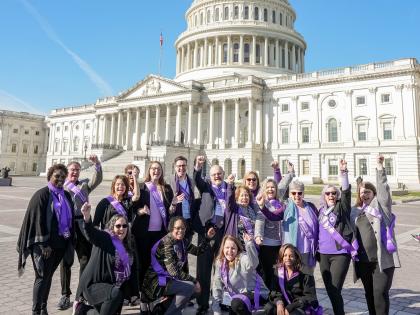Utah State Alzheimer’s Plan Overview

In March 2011, Utah’s state legislature passed Senate Bill 48, establishing the Utah State Plan Task Force within the Utah Division of Aging and Adult Services. Tasked with assessing the current and future impact of Alzheimer’s disease and other dementia within the state, the Task Force included representatives from state agencies, homecare providers, health plans, and elder law, as well as state legislators, an individual living with the disease, caregivers, and the lieutenant governor. After collecting public feedback, the Task Force drafted Utah’s State Plan for Alzheimer’s Disease and Related Dementias: Action Plan for 2012-2017, which was published in January 2012. In early 2018, Utah updated their plan, releasing Utah's State Plan for Alzheimer’s Disease and Related Dementias, 2018 to 2022. In 2023, the Utah Alzheimer's Disease and Related Dementias Coordinating Council released a new state plan with five priorities dedicated to addressing the needs of people living with dementia, caregivers, and health care professionals.
Utah 2025 Policy Priorities
Establish Dementia Specialists Across Utah
Individuals diagnosed or caring for someone living with dementia have to navigate a complex network of services and benefits to meet their care needs. With nearly 39,0000 Utahans living with dementia and the prevalence expected to continue to grow, Utah needs a stronger infrastructure for providing accessible support to individuals living with dementia and their caregivers. The Alzheimer’s Association is calling on state lawmakers to allocate $1.1 million to establish 12 full-time dementia specialists across the state. These specialists will help families navigate through the stages of dementia, and provide caregiver education and support services, among other vital services.

Empower Guardians and Conservators with Dementia Training
Due to the impact of dementia on a person’s ability to make decisions and in the absence of other advanced directives, people living with Alzheimer’s disease and other dementia may need the assistance of a guardian or conservator. Once appointed, a guardian may make decisions for the individual that relate to the person’s health, well-being and economic interest. With such responsibility, it is imperative that appointed guardians and conservators receive dementia-specific training. The Alzheimer’s Association is calling on Utah policymakers to require guardians and conservators who are serving people living with dementia to have dementia-specific training.

Establish a Governor’s Office Task Force on Aging and Dementia Caregiving
Utah spends $185 million in Medicaid costs for people living with Alzheimer’s. With such significant costs, the state must ensure a coordinated response across stakeholder groups to mitigate future impact. The Alzheimer’s Association is calling on the governor’s office to establish a Governor's Task Force on Aging with a subgroup dedicated to Dementia Caregiving.
Sign Up to Learn About Advocacy Opportunities in Utah

Find My Chapter
Together, we’re making an impact. Find an Alzheimer’s Association chapter in your community for more ways to engage.
Contact Us
State Affairs Contact: Jeremy Cunningham
Phone: 385.831.7128
Email: jscunningham@alz.org
38,300
people living with Alzheimer’s in Utah
115,000
Utahans are providing unpaid care
$255 Million
Medicaid cost of caring for people living with Alzheimer’s (2025)
209.1%
increase in Alzheimer’s deaths 2000-2022
19%
in hospice with a primary diagnosis of dementia
213.2%
increase of geriatricians in Utah needed to meet the demand in 2050
Resources to Drive Change in Utah
The following resources developed by AIM and the Alzheimer’s Association will help you learn more about the issues impacting people living with Alzheimer’s and their caregivers, how Utah policymakers are addressing these gaps, and how you can help drive change.